From Manual to Smart: Pallet Inverters Transforming Thailand's Material Handling
Running a busy factory floor is a constant balancing act. You have to keep production moving, ensure your team is safe, and protect your products from damage. I’ve seen this firsthand, from my early days as an engineer on the floor to now running my own packing machine factory. In fast-growing economies like Thailand, the pressure is even higher. Warehouses and distribution centers are buzzing with activity, and any inefficiency can create a major bottleneck. The traditional method of manually transferring goods from one pallet to another is slow, physically demanding, and a common source of product damage. It’s a problem that quietly eats away at profits through labor costs, workplace injuries, and written-off inventory. But what if you could remove this entire manual step and replace it with a single, swift, automated process?
A pallet inverter, or pallet changer, is a machine that transforms material handling by automating the process of transferring a full load of goods from one pallet to another. It securely clamps the load, rotates it up to 180 degrees, and allows for the quick and easy exchange of the pallet at the bottom. This single piece of equipment effectively eliminates the need for manual restacking, drastically reduces the risk of product damage, improves warehouse hygiene by separating wooden pallets from production areas, and significantly speeds up logistics. By doing so, it serves as a critical bridge from outdated manual processes to the smart, efficient, and safe operations required in today's competitive market.
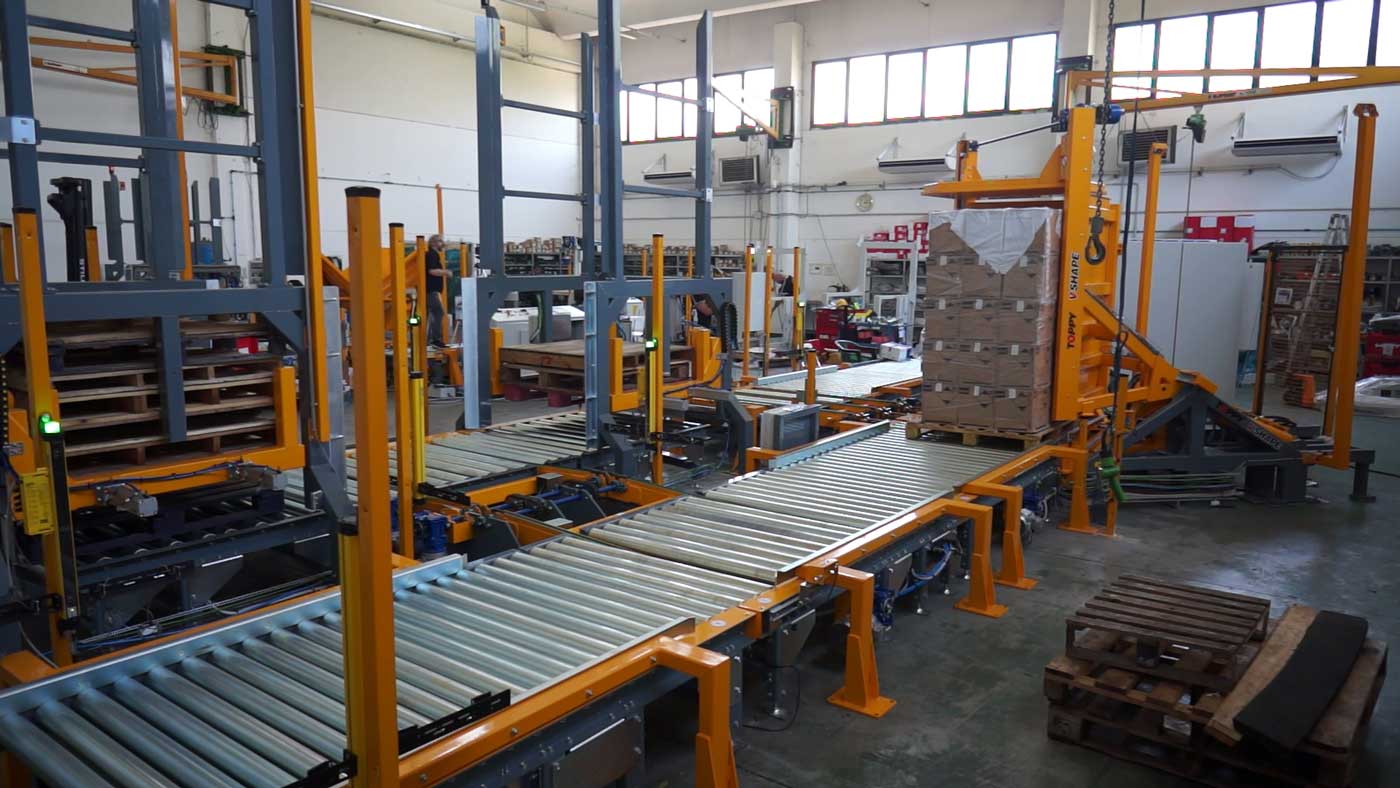
That sounds great on paper, but as a practical business owner, I know you’re thinking about the real-world implications. How does this machine actually impact my bottom line? Can it fit into my existing setup? Is it just another piece of equipment to maintain? These are the right questions to ask. I’ve built my career on understanding not just how these machines work, but how they deliver real value in demanding environments like steel mills and high-volume manufacturing plants. Let’s move beyond the sales pitch and dive into the practical ways a pallet inverter can solve some of the biggest challenges you face every day.
How Can Pallet Inverters Directly Address Rising Operational Costs?
Every factory owner I speak with, whether they are in steel, food, or chemicals, tells me the same thing: costs are always rising. Labor, energy, materials, and shipping—they all put pressure on your margins. You scrutinize every major expense, and you have to. In my experience, however, the most dangerous costs are often the ones that are hidden in plain sight, buried within inefficient processes. Manual pallet handling is a perfect example. It looks like a simple task, but it’s a black hole for resources. The time your workers spend restacking boxes is time they aren't spending on value-added activities. This slow, manual process creates a bottleneck that holds up shipments and hurts your overall throughput. A pallet inverter is not just a piece of equipment; it's a strategic tool designed to target and eliminate these hidden operational costs.
Pallet inverters directly address rising operational costs by tackling three key areas: labor, product damage, and pallet management. The machine automates a physically demanding job, reducing the need for manual labor dedicated to this task and lowering the risk of costly workplace injuries. It handles loads securely and gently, which minimizes product damage during transfer and reduces expensive write-offs. Finally, it allows for smart pallet management, enabling you to use high-quality pallets internally and switch to cheaper shipping pallets for dispatch, directly saving on pallet expenses. This multi-pronged approach leads to significant, measurable reductions in day-to-day operational spending.
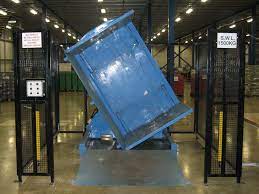
The Breakdown of Cost Savings
To truly understand the impact, you need to look at the numbers. Let’s break down the comparison between a manual process and an automated one using a pallet inverter. As an engineer, I always prefer to see things in a structured way.
| Metric | Manual Pallet Exchange | Pallet Inverter Exchange | Financial Impact |
|---|---|---|---|
| Labor | 2-3 workers, 15-20 minutes | 1 operator, 2-3 minutes | Significant reduction in labor hours and costs. |
| Product Damage | High risk of drops, crushing | Minimal risk with secure clamping | Drastic reduction in costs from damaged goods. |
| Time per Pallet | Slow, inconsistent | Fast, consistent cycle time | Increased throughput and faster order fulfillment. |
| Pallet Strategy | Inflexible, often one type | Flexible, use different pallets | Savings by using cheaper pallets for shipping. |
| Worker Safety | High risk of back/strain injuries | Eliminates manual lifting | Lower insurance premiums and fewer lost workdays. |
Let's dig into these points. The labor savings are the most obvious. You can reassign workers from the tedious job of restacking to more productive roles within the plant. This isn’t about eliminating jobs; it’s about optimizing your workforce.
Product damage is a cost that many companies accept as "part of business," but it doesn't have to be. I remember visiting a beverage company in Thailand. They were losing thousands of dollars each month because the boxes on the bottom of their pallets were being crushed during manual restacking. The solution was simple: a pallet inverter that could quickly and safely transfer the entire load to a stronger shipping pallet. The machine paid for itself in less than a year on saved product alone.
The most overlooked benefit is often pallet management. Many companies use expensive, high-quality pallets throughout their facility to ensure stability. But they don't want to lose these assets during shipping. A pallet inverter allows you to keep your premium pallets in-house. You can transfer loads to cheaper, one-way wooden pallets just before they go on the truck. The savings from this strategy alone can be substantial over a year. When you combine these direct savings, the financial case becomes very clear.
What Makes a Pallet Inverter a "Smart" Investment for Aging Production Lines?
You have production lines that are the workhorses of your plant. They've been running for 15, maybe 20 years. They are reliable, but they are also slow. They have become the bottleneck that limits your overall capacity. Tearing out the entire line for a full upgrade is a massive capital expense that is hard to justify. So, you live with the inefficiency, the occasional breakdowns, and the frustration of knowing you could be producing more. This is a common story I hear from factory owners who are trying to modernize on a realistic budget.
The challenge is how to inject modern efficiency into a legacy system without breaking the bank. You can't just plug a new brain into an old body. But you can strategically upgrade the weakest links. A pallet inverter is a "smart" investment because it acts as a modern bridge for your aging line. It doesn't replace your core process; it optimizes the handling process around it. By automating a critical manual bottleneck, it allows the entire line to perform closer to its true potential.
A pallet inverter is a "smart" investment for aging lines because it is a targeted upgrade that delivers outsized results. Instead of a full-scale, high-cost overhaul, it introduces modern automation and data-gathering capabilities precisely where they are needed most—at the material handling stage. By integrating with older equipment, it removes a key bottleneck, smooths out the workflow, and provides valuable operational data through its sensors. This allows you to boost the efficiency and intelligence of your existing assets, paving the way for predictive maintenance and higher overall equipment effectiveness (OEE).
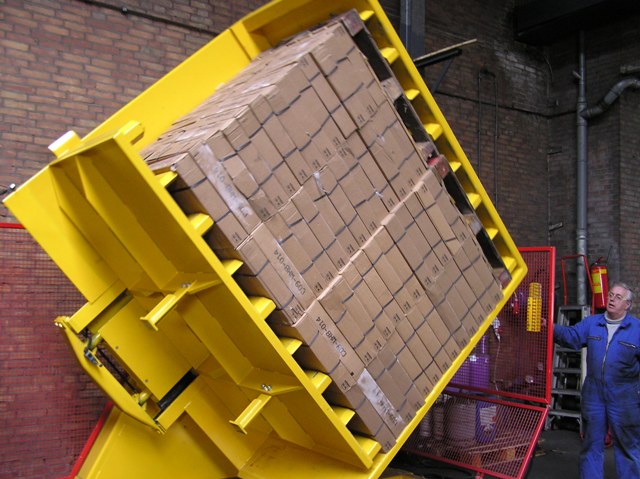
Integrating Intelligence into Legacy Systems
Think of your production line in terms of the Theory of Constraints. There is always one part of the process that is slower than all the others. In many plants with older equipment, that constraint is not the core machine itself, but the manual processes at the beginning or end of the line. Your main equipment might be able to handle more, but it sits idle, waiting for materials to be loaded or finished goods to be cleared. Manual pallet handling is a classic example of such a constraint.
A modern pallet inverter does more than just flip loads. It can be equipped with a suite of sensors that bring your aging line into the digital age.
- IoT Sensors: These can track cycle times, load weights, and clamping pressure.
- Data Integration: This data doesn't have to live in isolation. It can be fed directly into your Manufacturing Execution System (MES) or other data analysis platforms.
- Production Visualization: Suddenly, a black box part of your process becomes visible. You can see exactly how long pallet transfers take and identify any delays. This is the first step toward true optimization and aligns perfectly with goals like achieving comprehensive production visualization.
I worked with a steel wire manufacturer whose drawing and spooling lines were from the late 90s. They were solid machines, but the final stage—taking finished coils from production pallets and preparing them for shipment—was slow and entirely manual. We didn't touch his main production equipment. We simply installed an automated wrapping line that fed into a heavy-duty pallet inverter. This allowed them to transfer heavy coils from durable steel pallets to wooden shipping pallets safely and quickly. The result? The end-of-line bottleneck vanished. His overall plant throughput increased by over 15% because the main machines were no longer waiting for the manual packing team to catch up. This is a prime example of a smart, targeted investment that revitalizes an aging asset.
How Do Modern Pallet Inverters Enhance Both Safety and Environmental Compliance?
As a business owner, two things are always on your mind: the safety of your people and the rules you have to follow. A serious accident can have devastating consequences that go far beyond money. And environmental regulations are only getting stricter. The cost of non-compliance, both in fines and in reputation, can be immense. For years, material handling, especially with heavy loads, has been a major source of workplace injuries. Bending, lifting, twisting—these movements, repeated day after day, lead to costly back and muscle injuries. At the same time, the waste generated from broken wooden pallets and the dust they create can be an environmental and hygiene headache.
You might see a pallet inverter as a machine for efficiency, but I see it as a solution for safety and compliance as well. The core function of the machine is to eliminate the most dangerous part of pallet handling: the manual lifting. When you automate this process, you are not just making it faster; you are making it fundamentally safer. And by changing how you manage your pallets, you can significantly reduce waste and improve the cleanliness of your facility, helping you meet and exceed environmental standards.
Modern pallet inverters enhance safety by completely removing the need for manual restacking, a leading cause of musculoskeletal injuries in warehouses. Features like safety fencing, light curtains, and secure hydraulic clamping systems create a controlled, protected environment for load transfer. From an environmental standpoint, they promote sustainability by enabling the use and reuse of durable, long-lasting pallets internally, which dramatically reduces the consumption and disposal of single-use wooden pallets. This leads to less waste, a cleaner facility, and a smaller environmental footprint.
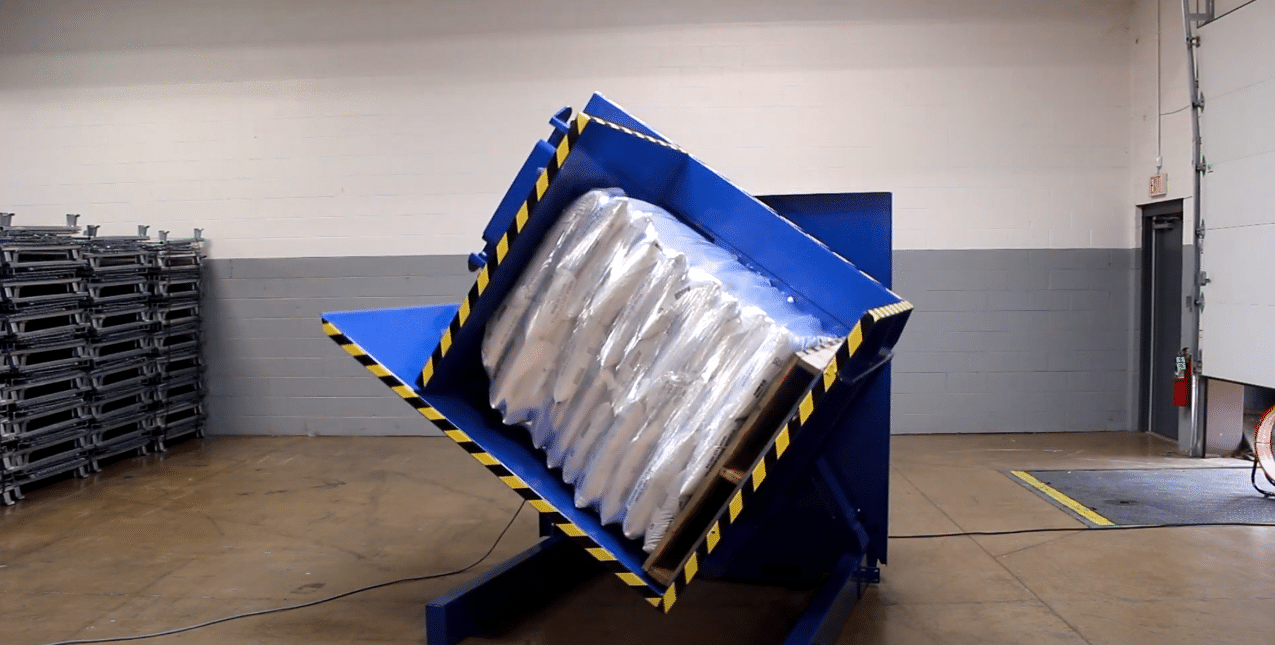
A Deep Dive into Safety and Environmental Features
When I started as an engineer, "safety" often meant painting a yellow line on the floor. Today, it's engineered into the core of the machine. Here’s how a modern pallet inverter is designed for safety:
- Physical Guarding: They are enclosed in robust safety fencing. This creates a physical barrier that prevents anyone from entering the operational area while the machine is in motion.
- Light Curtains: As a secondary layer of protection, invisible infrared beams stop the machine instantly if anything or anyone crosses into the danger zone.
- Secure Clamping: The top and side plates apply even, controlled pressure. This is critical. It ensures that the load, whether it’s a neat stack of boxes or an unstable set of bags, is held securely throughout the 180-degree rotation. This prevents catastrophic load failures.
- Ergonomics: The pallet exchange happens at a comfortable working height. There is no more bending to the floor to lift heavy items from the bottom of a pallet. This single ergonomic improvement eliminates the primary cause of back injuries in manual handling.
Now let’s look at the environmental impact. For any plant, but especially for those in industries like steel, reducing waste and improving air quality are constant pressures. A pallet inverter helps in several ways. The biggest impact is on pallet waste. Broken wooden pallets are a huge contributor to industrial landfill. By creating a closed-loop system with durable plastic or metal pallets for internal use, you drastically cut down on this waste. You only introduce a cheap wooden pallet at the very last step before shipping. This also means less wood dust and debris in your plant, contributing to better air quality and a cleaner work environment, which is often a key part of environmental compliance audits. It’s a simple change in process, enabled by one machine, that has a significant positive impact on both safety and sustainability.
What's the Real ROI of Integrating a Pallet Inverter into Your Workflow?
Let’s be direct. As someone who has invested his life savings to build a factory, I know that every major purchase has to be justified with numbers. It’s not about buying the newest technology; it’s about making smart investments that deliver a clear and predictable return. A new machine might have impressive features, but if it doesn't pay for itself and start generating profit, it's a liability, not an asset. You are constantly analyzing ROI and payback periods because you have to. The pressure to lower operating costs and increase profit margins is real and relentless.
So, when you look at a pallet inverter, the most important question is: what is the real ROI? It's easy for a salesperson to throw around vague promises of "improved efficiency." But you need concrete figures. The true ROI of a pallet inverter isn't just one number; it's a combination of hard, calculable savings and softer, but equally important, strategic benefits. We need to break it down into the components you can actually plug into a spreadsheet to see the payback period for your specific operation.
The real ROI of integrating a pallet inverter is calculated from a powerful combination of direct cost reductions and indirect efficiency gains. The direct, hard savings come from slashing manual labor hours, virtually eliminating product losses from handling damage, and reducing spending on disposable pallets. The indirect returns, which accelerate the ROI, include increased plant throughput because of faster processing times and improved safety, which leads to lower insurance costs and less downtime. For most industrial applications, these combined savings result in a full payback period of between 12 and 24 months.
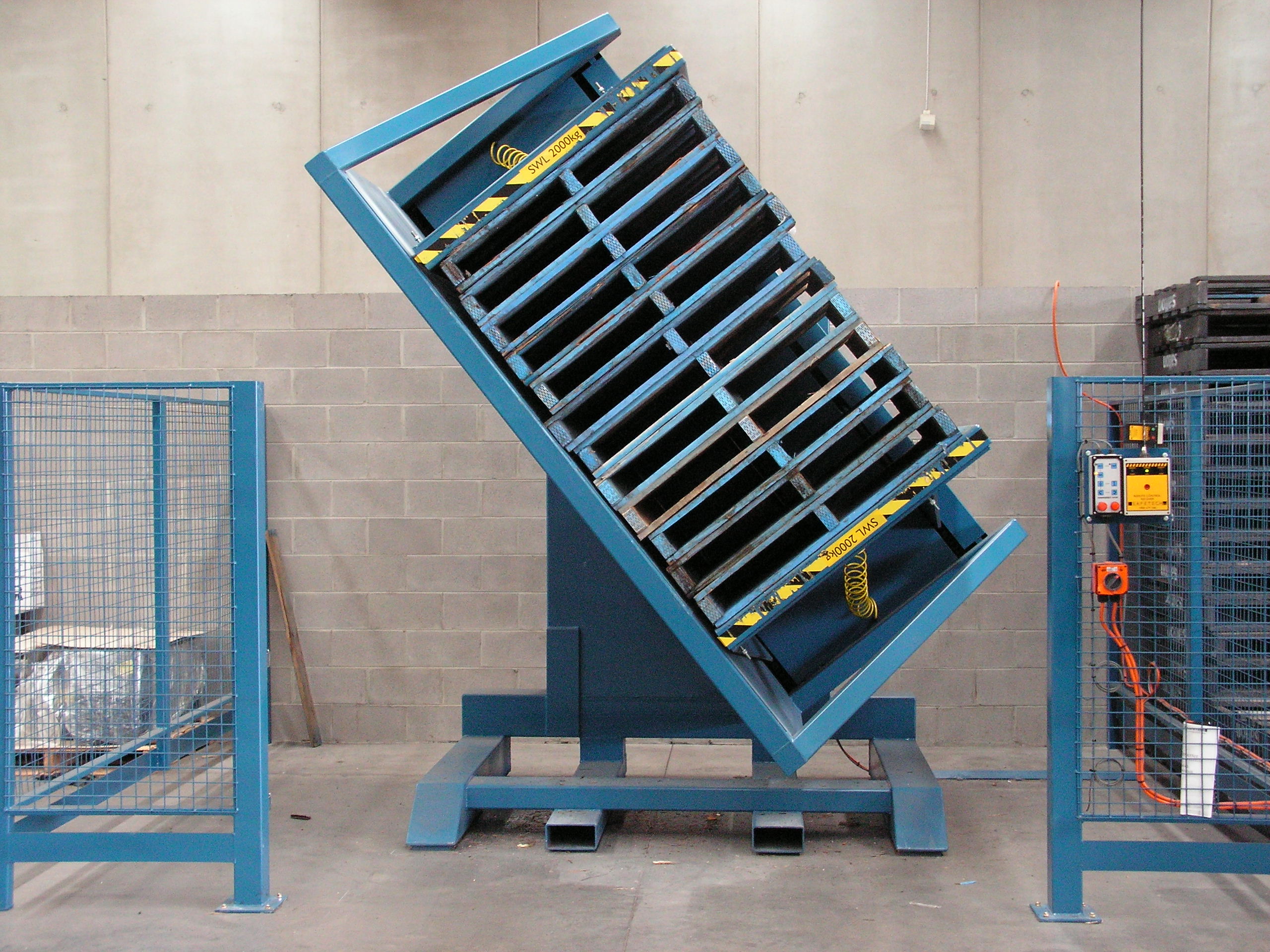
Calculating Your Payback Period
Calculating the ROI doesn't have to be complicated. It's about being honest about your current costs. Let’s create a simple framework.
Step 1: Calculate Your Annual Savings (The Return)
- Labor Savings: (
Number of Workers Reassigned) x (Annual Salary/Benefits) =A - Product Damage Savings: (
Average Monthly Value of Damaged Goods) x 12 =B - Pallet Cost Savings: (
Number of Pallets Shipped per Year) x (Cost of Premium Pallet-Cost of Shipping Pallet) =C - Total Annual Savings = A + B + C
Step 2: Determine Your Initial Investment
- Total Investment = Machine Cost + Installation & Training Cost
Step 3: Calculate the Payback Period
- Payback Period (in Months) = (Total Investment / Total Annual Savings) x 12
I once sat down with a steel plant owner in Mexico. His situation was very similar to Javier's profile. He was pragmatic, focused on numbers, and deeply skeptical of new equipment expenses. We didn't use a presentation; we used a whiteboard. We calculated his true labor cost for the three-person team that handled finished goods pallets. We looked at his inventory write-offs and found that damage during transfer was a consistent, low-level cost that added up. Then we calculated the savings he would get by keeping his custom-sized, heavy-duty steel pallets in-house. When we ran the final calculation, the payback period came out to just under 18 months. The conversation changed instantly. It was no longer an "expense." It was a self-funding project with a clear return. Beyond these hard numbers, there are other returns. What is the value of shipping an order a day faster? What is the value of a safer workplace on employee morale and retention? These are the strategic benefits that make a good investment a great one.
My Insights: Beyond the Machine - Choosing a True Partner
I've spent more than 25 years in this industry. I started on the factory floor, feeling the frustration when a machine broke down and production ground to a halt. I learned what it means to rely on your equipment. Later, as I built my own factory, I learned the other side of the story: the frustration of buying a machine from a supplier who vanishes the moment the check clears. This journey has taught me one crucial lesson: the machine itself is only part of the solution. Who you buy it from is just as important, if not more so.
When you're a business owner like Javier, with millions of dollars of capital on the line and hundreds of employees depending on you, you aren't looking for a supplier. You are looking for a strategic partner. A partner is someone who understands your challenges—the pressure of energy costs, the problems with aging equipment, the need for digitalization. A partner doesn't just sell you a product from a catalog; they work with you to solve a problem. This is the entire reason I founded SHJLPACK on the principle of knowledge sharing. Our slogan, "TOTAL SOLUTION FOR WRAPPING MACHINE," isn't just about the equipment; it's about the entire support structure that makes you successful.
A true partner provides support across the entire lifecycle. It starts with a deep consultation, where we listen to your goals and analyze your workflow. We want to understand your unique challenges before we even talk about a specific model. Then comes installation and integration. We ensure the pallet inverter communicates seamlessly with your existing MES and ERP systems, because we know that data is critical for your digital transformation goals. We provide comprehensive training not just for your operators, but for your maintenance team, empowering them to handle routine upkeep. And long after the sale, you have direct access to engineers—people like me—who know the machine inside and out. We are here to help you adapt, upgrade, and get the most out of your investment for years to come. This is the difference between buying a machine and gaining a partner dedicated to your growth.
Conclusion
Investing in a pallet inverter is more than an upgrade; it’s a strategic step towards a smarter, safer, and more profitable future for your material handling operations.



